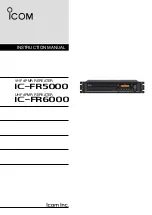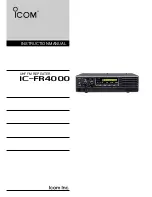
6
WARNING!!! Reliable operation of the heater depends on correct
installation of the heater. The heater must be installed horizontally
(according to Fig.1).
DO NOT install near flammable or heat-sensitive objects such as
sails, fenders, sheets, paper, gas pipelines, fuel tanks, etc.
When installing the heater, make sure that its casing does not contact the hull of the
vessel (Fig.2). Failure to do so may result in deformation of the heater casing, jamming of
the air blower fan and potential overheating.
It is recommended to use the bracket (can be supplied additionally) (Fig.3) and the
rubber seal for the installation surface of the heater, when installing the heater. Bend the
bracket to the desired position before installation.
Fig. 2 – Leave some free space
Fig. 3 – Installation bracket
3.2
Installation of air ducts.
The air for heating must be taken from clean space without exhaust gases. Never draw
air from the engine compartment.
Fresh air from outside or recirculated air from rooms can be taken for heating.
-
Intake of fresh air.
The air is taken from outside, heated and supplied to inner rooms. This operation
renews air in cabins and lowers humidity. Note locations of outlet vents in cabins and make
sure that their number is sufficient. Avoid ingress of overboard or rain water into the inner
space of the heater.
-
Air intake from inner rooms.
In this case, heated air is taken from inner rooms. The advantage of such option is fast
heating due to better use of heat. However, this operation does not lower humidity, and the
air in the room is not renewed.
Use only thermally stable air ducts to lay channels for heater air! To avoid
injuries to personnel or damage to the equipment, air channels must have heat
insulation. Heat insulation is also necessary to reduce heat losses, when
laying air ducts in unheated rooms.




































